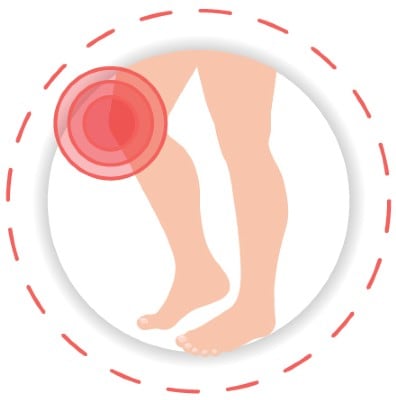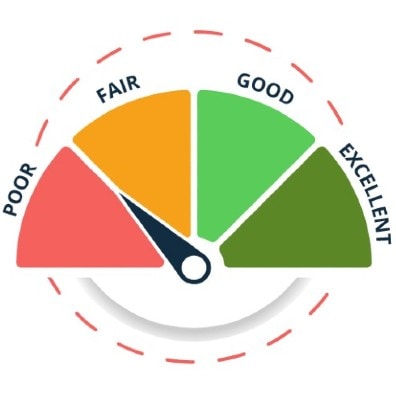Division of Population Health At A Glance

CDC’s Division of Population Health (DPH) provides national leadership and scientific expertise to prevent and control costly chronic diseases, reduce health disparities, and improve the health and well-being of populations across the life span. The division provides state and local health data through programs such as the Behavioral Risk Factor Surveillance System and PLACES. DPH’s Prevention Research Centers develop and test innovative programs and move ones that work into public health practice.
DPH promotes the use of population-based strategies to:
- Improve symptoms and quality of life for people with conditions such as Alzheimer’s disease, arthritis, epilepsy, and lupus.
- Reduce excessive alcohol use.
- Improve health for specific groups, such as older people and tribes, and settings, such as schools and workplaces.
DPH also addresses emerging and evolving public health topics and priorities such as social determinants of health, social and emotional well-being, and chronic disease education and awareness.
What We Do
With an FY 2022 operating budget of about $167 million, DPH directs and manages public health programs, services, and applied research activities focused on promoting population health and preventing chronic diseases across the life span. To achieve its goals, DPH works to:
- Measure and report how chronic diseases and risk factors affect populations in the United States.
- Study interventions and strategies to find out what works best to prevent and control chronic diseases.
- Fund and support states, cities, territories, tribes, schools, employers, and national public health partners to use population-based interventions that improve health.
- Share information to help all Americans understand the risk factors for chronic diseases and how to reduce their risk.
Why We Do It
Arthritis affects 58.5 million US adults and is a major cause of work disability in the United States. Alzheimer’s disease is the 6th leading cause of death in the United States, and 6.5 million US adults are living with Alzheimer’s dementia. Excessive alcohol use costs the nation $249 billion annually and is responsible for 1 in 5 deaths among adults aged 20 to 49 years. About 3.4 million Americans have epilepsy nationwide, including 470,000 children. Each day, 132,000 schools provide a setting for 57 million students to learn about health and healthy behaviors. American Indians and Alaska Natives experience many health disparities, and today have a life expectancy that is 4.4 years less than all US races.

58.5
MILLION
US adults have arthritis.

6.5
MILLION
Americans are living
with Alzheimer’s
dementia.

1 in 5
DEATHS
from excessive alcohol use are among adults ages 20 to 49.

3.4
MILLION
Americans have epilepsy.

48%
of high school students
don’t attend PE at least
1 day per week.

23%
of American Indian/Alaska Native adults are in fair or poor health.
How We Do It
DPH provides essential data; opportunities for innovative research; scientific expertise in disease areas, risk factors, and settings; and tools for program development and implementation. The division uses proven strategies to address current and evolving public health needs across the life span. DPH also works with local, state, territorial, and tribal organizations, as well as schools, universities, employers, and national partners to develop, implement, and improve effective programs. Major programs include the following:
Behavioral Risk Factor Surveillance System (BRFSS)
BRFSS collects state data about health risk behaviors, chronic health conditions, and use of preventive services among US adults aged 18 or older. It collects data in all 50 states, the District of Columbia, and 3 US territories. BRFSS completes interviews with more than 400,000 US adults each year, making it the largest telephone health survey in the world.
Local Data
DPH improves access to local data through innovative collection and analysis efforts, including PLACES: Local Data for Better Health, the Chronic Disease Indicators, and geospatial analysis and mapping. Understanding the community context helps guide public health research and practice.
Healthy Schools

CDC works with states, school systems, communities, and national partners to prevent chronic diseases and promote the physical and mental health of children and adolescents in schools. Establishing healthy behaviors during childhood is easier and more effective than trying to change unhealthy behaviors during adulthood. Schools play a critical role in helping children develop lifelong healthy habits.
Healthy Tribes
CDC works with tribal organizations, Urban Indian Organizations, Tribal Epidemiological Centers, and other tribal partners to promote health, prevent chronic diseases, reduce health disparities, and strengthen connections to culture and community practices among American Indian and Alaska Native people. Programs include Good Health and Wellness in Indian Country, Tribal Practices for Wellness in Indian Country, and the Tribal Epidemiology Center Public Health Infrastructure.
Alzheimer’s Disease and Healthy Aging Program

CDC leads the nation’s public health efforts to promote health and quality of life for older Americans and help older adults with dementia remain active, independent, and involved in their community. DPH promotes awareness of Alzheimer’s disease and other dementias through the National Healthy Brain Initiative and Building Our Largest Dementia (BOLD) infrastructure. The division also studies the societal and economic cost of dementias, supports data collection on cognitive decline and caregiving, and works to ensure that caregivers have the resources to provide quality care to people with dementia.
Arthritis Program

CDC works to protect the health of the 58.5 million men and women with arthritis in the United States. DPH conducts research and collects data to identify trends and learn how the disease affects quality of life for people with arthritis and other chronic conditions. CDC also funds state health departments to expand the reach of proven physical activity and self-management education programs and works with national partners to increase access to these programs and promote walking.
Social Determinants of Health
Differences in social determinants of health (SDOH) contribute to the stark and persistent chronic disease disparities among racial, ethnic, and socioeconomic groups, systematically limiting opportunities for members of some groups to be healthy. The program is addressing five SDOH priority areas that reduce health disparities and inequities and improve health outcomes related to chronic disease: built environment; community-clinical linkages; food and nutrition security; social connectedness; and tobacco-free policies.
Prevention Research Centers (PRCs)
The PRC Program is a network of 26 academic research centers that study how people and their communities can avoid or counter risks of chronic diseases such as heart disease, obesity, and cancer. As leaders in translating research into policy and public health practice, PRCs work with communities to develop, evaluate, and put into action major changes that can prevent and control chronic diseases.
Alcohol Program
Excessive alcohol use, including underage drinking and binge drinking (drinking 5 or more drinks on an occasion for men or 4 or more drinks on an occasion for women), can increase the risk of injuries, violence, liver diseases, and cancer. CDC is at the forefront of the nation’s efforts to prevent excessive alcohol use and related harms in states and communities and to strengthen the scientific foundation for work in this area.
Epilepsy Program
CDC works to improve the health and well-being of people with epilepsy through multiple strategies. DPH conducts research, collects and shares data, develops and funds effective programs, works with partners, and promotes awareness of epilepsy as a public health issue to motivate action.
Lupus Program
CDC supports research on lupus, an autoimmune disease that triggers inflammation in different tissues of the body. Lupus can be treated but not cured. DPH studies interventions to identify what works and conducts pilot programs to guide public health practice. The division also funds patient registries and long-term studies and works with partners to raise awareness, increase knowledge, and enhance the skills of health care providers who care for lupus patients.
Evolving Public Health Topics
DPH works to address evolving public health needs and conducts epidemiologic activities to support these emerging areas, including chronic disease education and awareness, chronic obstructive pulmonary disease, inflammatory bowel disease, interstitial cystitis, emotional well-being, and insufficient sleep. DPH also provides leadership to improve the health, safety, and well-being of employees through science-based workplace health promotion programs.